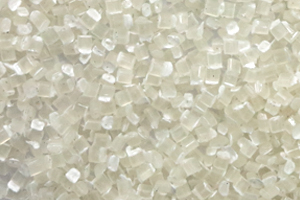Slip agents

Today’s slip masterbatch additives for LDPE, LLDPE, and other polyolefin films offer a wider range of performance capabilities than in the past. These products range from the traditional amide slips—the predominant grades now in use—to newer specialty, non-migratory grades that can meet such needs as the ability to work well at higher temperature, improve reliability, and hold coefficient of friction (COF) steady before and after laminating. Processors should be aware of newer alternatives that overcome slips’ previous limitations.
Slip agents overcome the resins’ natural tackiness so they can move smoothly through converting and packaging equipment. LDPE and LLDPE films are commonly categorized as low-, medium-, or high-slip, depending on their COF. The COF level generally corresponds to how much slip they contain.
Slip masterbatches are available in formulations that allow for various diffusion rates, end-use temperatures, base resins, and ink types. Traditional slips are based on unsaturated fatty acid amides, most commonly oleamide and erucamide. These primary amides migrate rapidly through polyolefin films after extrusion and appear on the surface of the film to lower the COF.
Other slips based on secondary amides have almost twice the molecular weight of primary amides and thus migrate more slowly in polyolefins. Traditional primary and secondary amides are offered commercially in LDPE, LLDPE, and mLLDPE carriers.
The newer slip masterbatches include non-migratory slips with very large molecules and specialized formulations adapted for lamination. Specialty grades may be comprised of blends of primary slips or primary and secondary amide slips, as well as a variety of carrier resins such as PP, EMA, and EVA.